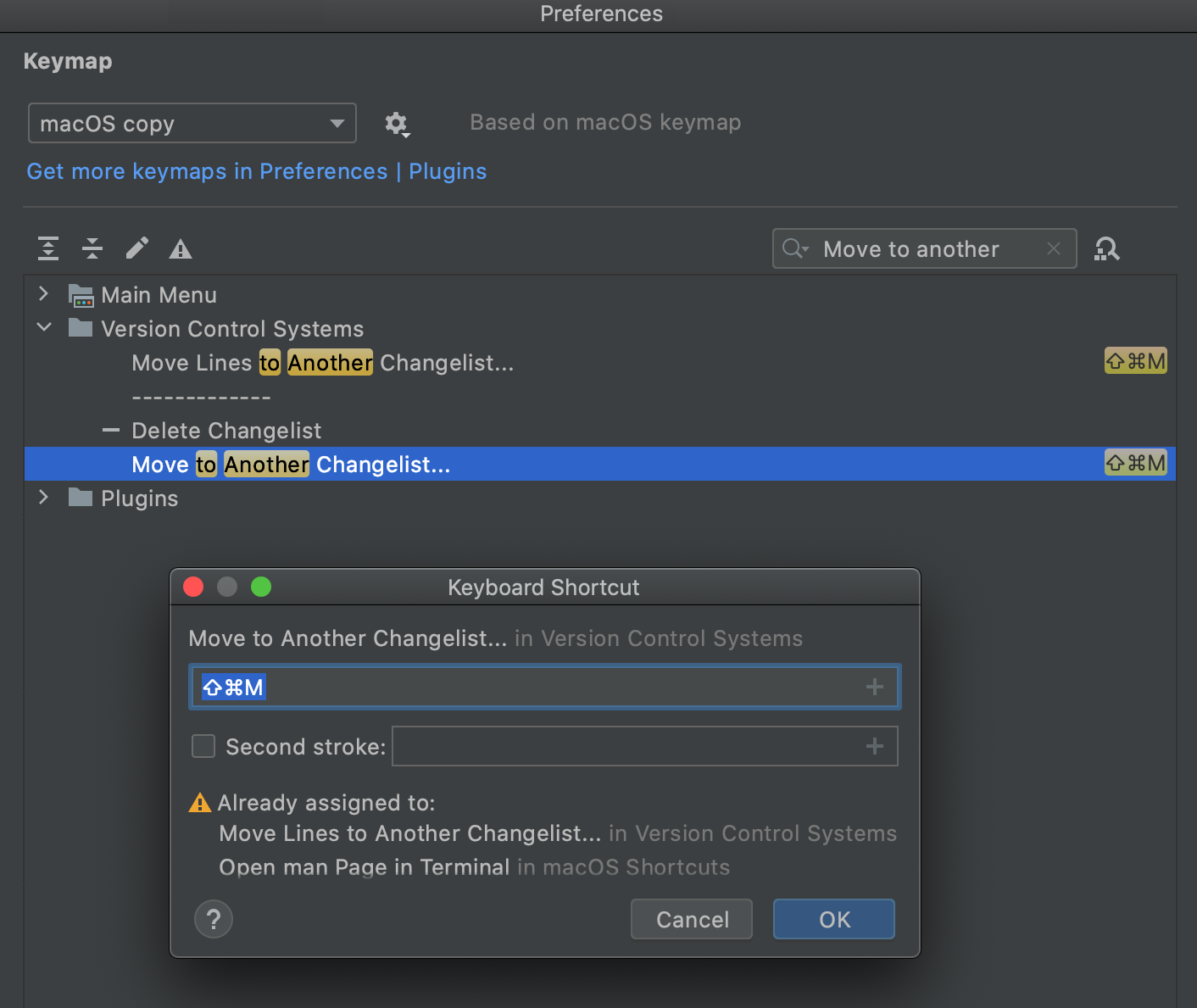Configure keyboard shortcuts
File | Settings | Keymap for Windows and Linux
WebStorm | Preferences | Keymap for macOS
Ctrl+Alt+S
WebStorm includes several predefined keymaps and lets you customize frequently used shortcuts.
To view the keymap configuration, open the Settings/Preferences dialog Ctrl+Alt+S and select Keymap.

WebStorm automatically suggests a predefined keymap based on your environment. Make sure that it matches the OS you are using or select the one that matches shortcuts from another IDE or editor you are used to (for example, Eclipse or NetBeans).
You cannot change predefined keymaps. When you modify any shortcut, WebStorm creates a copy of the currently selected keymap, which you can configure. Click to duplicate the selected keymap, rename, remove, or restore it to default values.
note
A custom keymap is not a full copy of its parent keymap. It inherits unmodified shortcuts from the parent keymap and defines only those that were changed. For information about the keymap files, see Location of user-defined keymaps.
The keymap itself is a list of actions with corresponding keyboard and mouse shortcuts, and abbreviations. To find an action by name, type it in the search field. If you know the shortcut of an action, click and press the key combination in the Find Shortcut dialog.
When consulting this page and other pages in WebStorm documentation, you can see keyboard shortcuts for the keymap that you use in the IDE — choose it using the selector at the top of a page.
tip
To view the keymap reference as PDF, choose Help | Keymap Reference from the main menu.
Location of user-defined keymaps
All user-defined keymaps are stored in separate configuration files under the keymaps subdirectory in the WebStorm configuration directory:
- Syntax
- %APPDATA%
\JetBrains \<product><version> \keymaps - Example
- C:
\Users \JohnS \AppData \Roaming \JetBrains \WebStorm2021.1 \keymaps
By default, this directory contains only the default keymaps. When you modify one of them, WebStorm actually creates a child keymap file that contains only the differences relative to the parent keymap. For example, if you modified the default Windows keymap, your custom keymap will be its child. The file will contain only the shortcuts that you added or modified, while all other shortcuts of your custom keymap will be the same as the default Windows keymap.
You can share your custom keymaps with team members or between your IDE instances. Copy the corresponding keymap file and put it in the keymaps directory on another WebStorm installation. Then select the copied keymap on the Keymap settings page.
Conflicts with global OS shortcuts
Predefined keymaps do not cover every possible platform, version, and configuration. Some shortcuts can conflict with global system actions and shortcuts for third-party software. To fix these conflicts, you can reassign or disable the conflicting shortcut.
WebStorm detects the conflicts and notifies you with a popup message. If you miss the popup, you can always view the message in the Event log tool window:

Click Modify shortcuts to open the Keymap settings dialog where you can make the necessary adjustments:

Here are a few examples of possible system shortcut conflicts with the default keymap in WebStorm. Make sure that function keys are enabled on your system.
| Shortcut | System action | WebStorm action |
|---|---|---|
| ⌃Space | Select the previous input source | Basic code completion |
| ⇧⌘A | Search man Page Index in Terminal | Find Action |